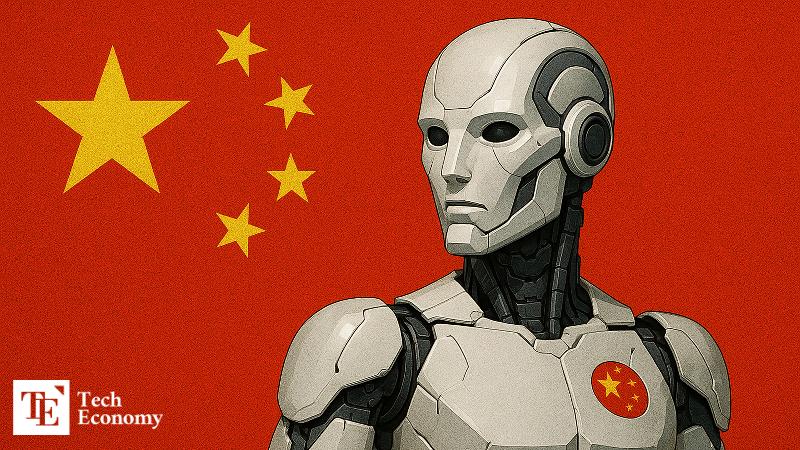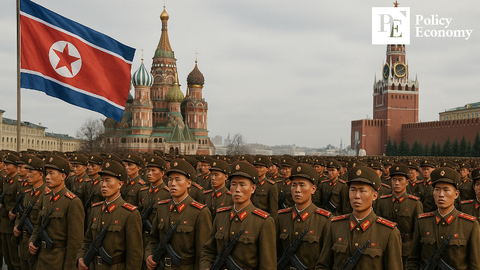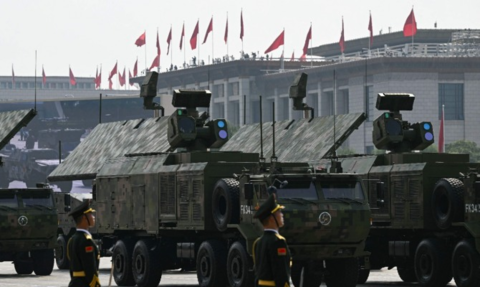China’s Military Parade Becomes a Showcase of Next-Generation Weaponry, Underscoring its Pursuit of an ‘Automated Army’
Input
Changed
Parade Features Wide Array of New Weapons Unveiling of Colossal Unmanned Submersibles and AI Drones Automation Accelerates the Race for Battlefield Supremacy

At the 80th anniversary Victory Day parade in Tiananmen Square, Beijing, China unveiled an array of next-generation armaments designed to dominate future battlefields. Among the highlights was the FH-97, a stealth combat drone capable of coordinating operations with manned aircraft. By displaying futuristic systems reminiscent of “Star Wars,” including unmanned combat platforms, China not only showcased the maturity of its automated warfare capabilities but also signaled its intent to surpass U.S. military power in the future battlespace.
AI Stealth Drones and Robotic Quadrupeds Highlight China’s Vision
The 70-minute parade, commencing at 9 a.m., was structured as a live arsenal exhibition that encapsulated the modernization drive of the People’s Liberation Army (PLA). Central to the display was the completion of China’s nuclear triad spanning land, sea, and air deterrence. U.S. defense think tanks estimate China’s nuclear warhead stockpile has expanded to roughly 1,000 units, accompanied by the rapid construction of new missile silos across its western deserts.
On land, the DF-61 intercontinental ballistic missile (ICBM), with a range exceeding 13,000 kilometers, was revealed alongside the DF-5C, unveiled for the first time. Analysts believe the DF-61 is an upgraded variant of the DF-41. The display also included the “Guam Killer” DF-26D and the DF-17, engineered to neutralize America’s Terminal High Altitude Area Defense (THAAD) system. Maritime deterrence was embodied by the JL-3 submarine-launched ballistic missile (SLBM), while airborne capabilities were reinforced with the JL-1 for strategic bomber deployment, completing the air leg of the nuclear triad.
China also demonstrated next-generation unmanned assets designed to operate across domains. The AJX-002, a colossal unmanned undersea vehicle, was introduced as Beijing’s answer to Russia’s “Poseidon,” marketed as capable of months-long autonomous navigation, reconnaissance, and even nuclear strikes. Stealth combat drones GJ-11 and CH-7 (also referred to as FH-97) were promoted under the “loyal wingman” concept, emphasizing AI-based collaborative missions with manned fighters. By demonstrating precision strike capabilities with internal weapons bays, China hinted at a future battlespace where drones and fighter jets operate in seamless synergy. The presentation further included hypersonic anti-ship missiles such as the YJ-17, as well as robotic quadrupeds and other unmanned combat systems.

Official Pivot Toward Combat Automation
Military analysts interpret the parade as an explicit declaration that the PLA is embracing a combat model centered on automation. Real-time situational awareness and precision strike capabilities driven by unmanned combat systems represent the operational framework of “intelligentized warfare.” According to state broadcaster CCTV, PLA drills this year employed drones integrated into NORINCO’s intelligent precision strike system, which processes UAV-generated data to model battlefields, track targets, and disseminate firing coordinates—automating virtually all functions short of issuing the launch order itself.
Researchers at the PLA National Defense University emphasized the pivotal role of large language models (LLMs) in military operations. By processing vast datasets at speed, LLMs streamline intelligence analysis and accelerate weapons development. PLA strategists aim to harness LLMs to generate detailed, realistic simulations and training scenarios with minimal human input.
The PLA is also accelerating the integration of AI into intelligence, planning, and decision-making. One focus is “Aiwu LLM+,” developed at the People’s Armed Police Engineering University. Combining LLMs, multimodal big data analytics, and virtual assistant interfaces, the system delivers intelligent interactions and supports operational planning within command-and-control networks. Beijing ultimately envisions an AI-driven, multi-source information system designed to enhance commander insight and compress decision cycles.
Beijing Elevates Automated Systems as a Core Defense Priority
China’s unmanned warfare technologies are evolving into integrated ecosystems encompassing drones, robots, UAVs, and unmanned vehicles capable of reconnaissance, surveillance, and strike missions. Beijing is simultaneously accelerating the development of AI-driven command-and-control systems and predictive battlefield analytics. Drones are already widely deployed for reconnaissance, communications, and kamikaze strikes. The Wing Loong series, in particular, combines high-altitude endurance with strike payload capabilities.
The rationale behind this automation push lies in minimizing human attrition. Despite China’s vast population, modern warfare demands highly trained officers and staff, whose cultivation requires considerable time and resources. AI offers a strategic shortcut. Systems trained on military manuals, historical combat records, and live satellite feeds can assume the analytical workload of thousands of staff officers while delivering faster and more precise judgments. This underscores why Beijing has long viewed automation as a force multiplier of strategic value.
Institutionally, China has been reinforcing the framework for automated weapons development since designating AI advancement a national strategy in its 2017 “Next Generation AI Development Plan.” The March revision of the “Military Equipment Science Research Regulations” further codified AI weapons development. Meanwhile, the drone sector has been prioritized under the “Made in China 2025” program, and four-legged ground robots are in active development.
Beijing’s acquisition strategy rests heavily on civil-military integration. The AI system behind China’s flagship combat robot, “Robot Wolf,” was developed by private technology firm Zhenshen Keji. Similarly, “Jiutian,” an unmanned aerial mothership capable of deploying drone swarms, emerged from joint development between Shanxi UAV Technology Co. and state defense contractors. These cases exemplify China’s bid to convert civilian innovations into military applications, creating a self-reinforcing cycle of technological advancement and force automation.






















Comment